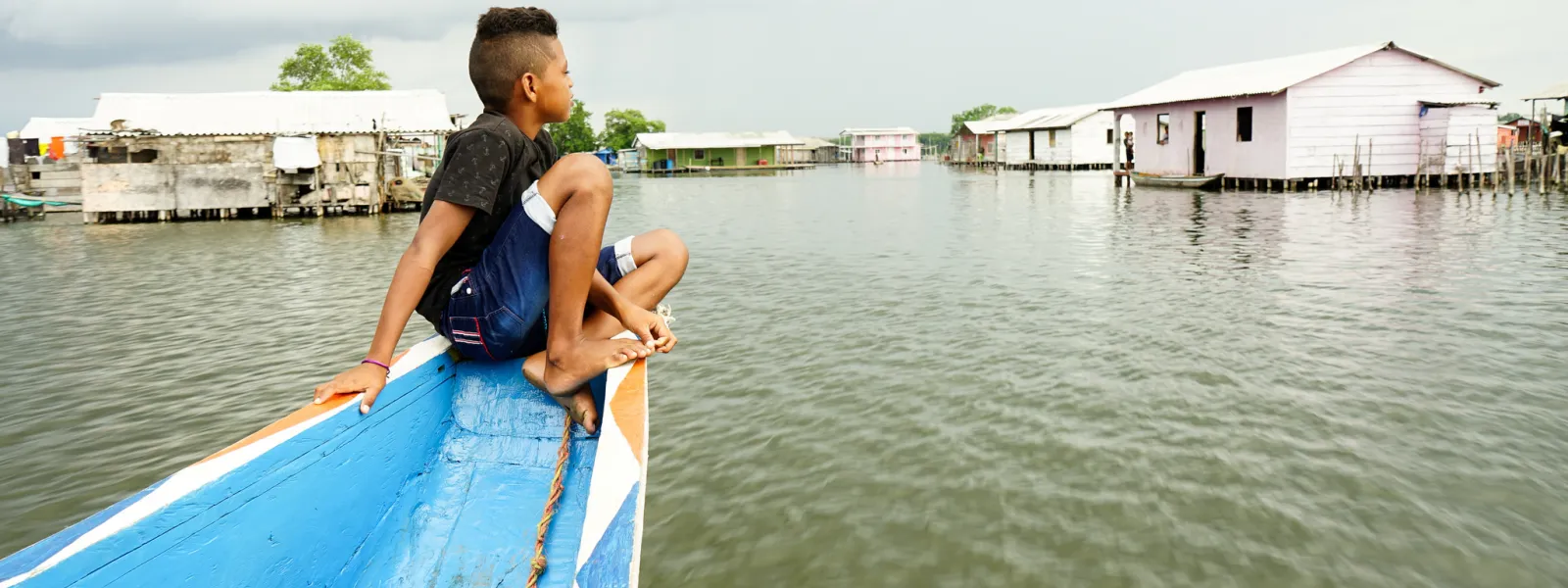
Project
Photo: Anna Laurie Miller / AIDAConserving the Ciénaga Grande de Santa Marta
Ciénaga Grande de Santa Marta, the largest and most productive coastal wetland in Colombia, covers 45,000 hectares. At the confluence of the Magdalena River and the Caribbean Sea, the site boasts an immense variety of flora and fauna, including mammals, birds and fish. Its southern tip is a beautiful sanctuary of mangroves, swamp and amphibious forest.
On the calm waters of the marsh stand the Ciénaga’s famous stilt villages, supported by pillars or simple wooden stakes and inhabited by local fishermen since 1800. In a place accessible only by water, many of the things we take for granted—being served a glass of water, quick access to a doctor—are considered luxuries. Residents depend on the natural world around them. Sadly, in recent years mass fish die-offs caused by the marsh’s degradation have threatened the livelihoods of 2,500 people who call the Ciénaga Grande home.
Illegal activities are destroying this vital ecosystem: intentionally set forest fires, deforestation of large tracks of land for agriculture and livestock, logging and burning of mangroves, and 27 kilometers of illegally built dikes.
This destruction not only devastates the local fishery; it also has global impact. Ciénaga Grande’s mangroves absorb large quantities of carbon dioxide from the atmosphere, aiding in the global fight against climate change.
The importance of the Ciénaga Grande has been recognized both nationally – the Sanctuary of Flora and Fauna Ciénaga Grande de Santa Marta is a national park – and internationally: UNESCO’s Man and the Biosphere program declared the lagoon a biosphere reserve; and the Ciénaga Grande is listed as a Wetland of International Importance under the Ramsar Convention, an intergovernmental treaty for the protection of wetlands.
AIDA and our partners are advocating for the Colombian government to fulfill its national and international obligations to protect the Ciénaga Grande. After all, millions of animals, the local community, and our global climate depend on it.
Partners:
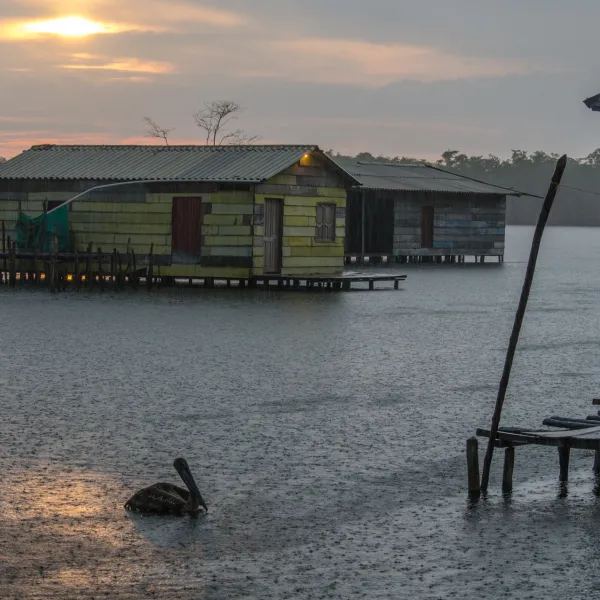
Related projects
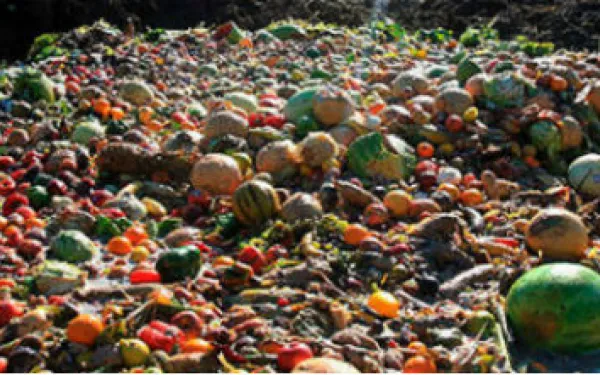
"A full belly makes a happy heart": How does food waste affect the environment?
By Gladys Martínez, legal advisor, AIDA It’s the weekend and we’re at the beach in Costa Rica. The sun is shining, we’re surrounded by nature and listening to the sound of the sea as we enjoy a delicious traditional breakfast of tropical fruit, gallopinto (rice and beans), eggs, home-made tortillas and coffee brewed in a cloth filter. I wish I could say, “And we lived happily ever after". But I can’t. I get upfrom the table to see a heapof leftovers... The problem of food waste and its impacts On World Environment Day this past June 5, the Food and Agriculture Organization of the United Nations (FAO) presented alarming data about the impact of food waste on the environment. In the report Food wastage footprint: Impacts on natural resources, the FAO states that food production accounts for: - 25% of the earth’s surface, - 70% of water consumption, - 80% of deforestation, - and 30% of the greenhouse gas emissions that contribute to climate change. The report notes that producing one liter of milk requires 1,000 liters of water! This means that pouring a glass of milk down the sink is equivalent to dumping 250 liters of water. Throwing out one hamburger is like tossing more than 60,000 liters of water. In terms of total food wastage, 54% is generated during the production, handling and storage at harvests. The remaining 46% is generated during the processing, distribution and consumption of food. The direct economic cost of food wastage is estimated at more than USD $750 billion annually. This figure seems unthinkable on a planet where one in every seven people go hungry and more than 20,000 children under the age of five die from hunger every day. A lot can done inpidually and as a country Costa Rica has campaigns aimed at motivating people to consume responsibly and raise awareness about sensible eating to preserve the environment and other people’s right to food. Working together with the United Nations Environment Programme (UNEp) and the FAO on the campaign Think.Eat.Save, Costa Rican singers Debi Nova, José Cañas (in Spanish) and Manuel Obregón (in Spanish), who doubles as the country’s minister of culture and youth, composed a song against food wastage called “Alimento para el alma” (“Food for the Soul”). ”Food for the Soul" video (in Spanish). Source: YouTube The Food Bank (Banco de Alimentos) is another Costa Rican initiative. Fourteen private companies have agreed to donate products unfit for sale because of damaged labels or packaging. The social and environmental awareness of these companies has made it possible for 15,169 poor people to receive about two plates of food every day over the past year and a half. What can I do at home? Everyone can helpreduce food waste. The campaign Think.Eat.Save offers these helpful tips: ▪ Purchase wisely: Don’t buy more than you need and choose products withless packaging. ▪ Better planning: Cook what you can eat and freeze the leftovers to eat later. ▪ Support distributors of organic and “wonky” fruits and vegetables. Eating organic food has a minimal impact on your health and the environment, and misshapen fruits and vegetables still taste delicious even if they do not look perfect. ▪ Read food labels carefully so as not to throw away perfectly good food. Nine out of 10 people throw out food because they don’t understand what the labels mean.Did you know that if you put an egg in a bowl of water and it floats, that means the egg is bad? If it sinks, it’s still edible. Find out more at FixFoodDates.com ▪ Reduce your food waste and compost what you don’t eat. You can find more useful advice at thinkeatsave.org. Bon appétit!
Read more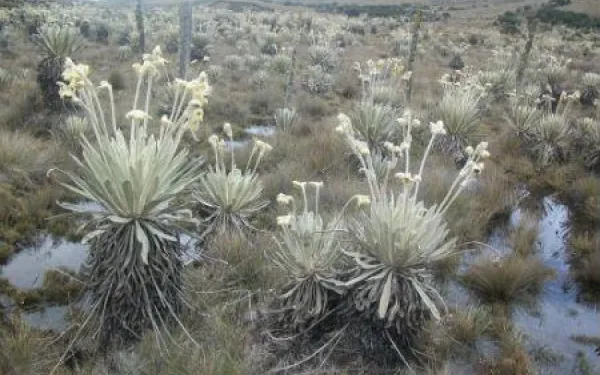
What are the páramos and what can you do to protect them?
By Carlos Lozano, legal advisor, AIDA, @CLozanoAcosta What are páramos? The answers to this question are the very reasons why we must support their conservation. They are rare and unique ecosystems. The páramos provide an environmental service to more than 100 million people. They possess the greatest botanical biopersity of all high-altitude ecosystems: 60% of their plant species are endemic (that is, they are found only in the páramos). Their formation is a slow and steady process that has taken hundreds of thousands of years. Although the Colombian páramo is considered tropical because it is situated near the equator, the climate is not hot. It is rather cool due to its high altitude of 3,000 meters (9,842 feet) above sea level. The páramo is a geographical paradox: a frosty ecosystem found in a tropical zone. It alsois an incredible beauty. They form a major part of Latin American history. The páramo was dubbed “the land of the mist” by the conquistadores. The indigenous inhabitants incorporated the páramo in traditional ceremonies as it was considered to be a sacred area. The Muisca people of Colombia’s central highlands believed that the páramo gave birth to their primordial mother, the mythological Bachué. The famous legend of El Dorado also originated in the páramo; A Muisca chief was said to have covered himself in gold and thrown himself into Lake Guatavita, prompting the conquistadores to go on a great gold rush in the search of his treasures. During the Colombian War of Independence, Simón Bolívar crossed the Pisba páramo to elude Spanish army sentinels stationed on the main roads. They are a vital water source and a carbon sink that combats climate change. The páramos feed streams, rivers, aquifers and water catchment areas. These in turn supply water to major South American cities including Bogotá and Quito. The páramo also have a remarkable ability to store water through its vegetation and unique geological and ecological features. It also acts as a carbon sink, accumulating carbon through organic matter in the soil. Invasive activities like mining have a detrimental impact on this process by releasing carbon stored in the soil, contributing to global warming. These points demonstrate how the páramos play an important role as a vital source of water and an ally in combating climate change. Their protection is crucial for our future. In Colombia, where more than half of the world’s páramos are located, the government is making a decision on the future of these valuable and fragile ecosystems through a process of officially demarcating their territorial boundaries. Despite the ecological and environmental importance, the boundaries of the Colombian páramos still have not been defined. This poses a serious risk to the area as it is left vulnerable to harmful activities that could destroy it. To truly protect the páramos from irreparable damage it is essential to clearly define its territorial boundaries. The Santurbán páramo, located between the departments of Santander and North Santander, will soon become the first area to be officially demarcated, according to government plans. Mining interestsalready pose a threat to the area. What is urgent now is for Colombia’s minister of environment to demarcate the Santurbán páramo territory based on scientific criteria. AIDA is taking online action to call for this proposal. With YOUR SIGNATURE, you can support the cause and pressure the government to protect the páramos. Join us to protect the páramos!YOU CAN SIGN too (in Spanish)!ASK Colombia’s president and minister of environment to properly delineate the Santurbán páramo NOW! #SaveSanturbán
Read more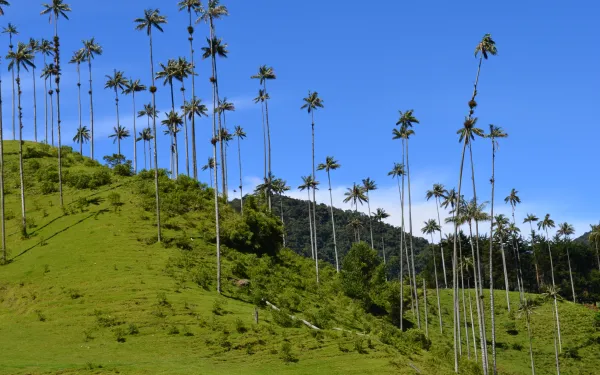
Letter to the Board of the Green Climate Fund
Organizations, movements and civil society groups from developing countries -with decades of experience working for the rights and aspirations of peoples and communities- express their unified call for the adoption of the most robust environmental and social protections at the Green Climate Fund.
Read more